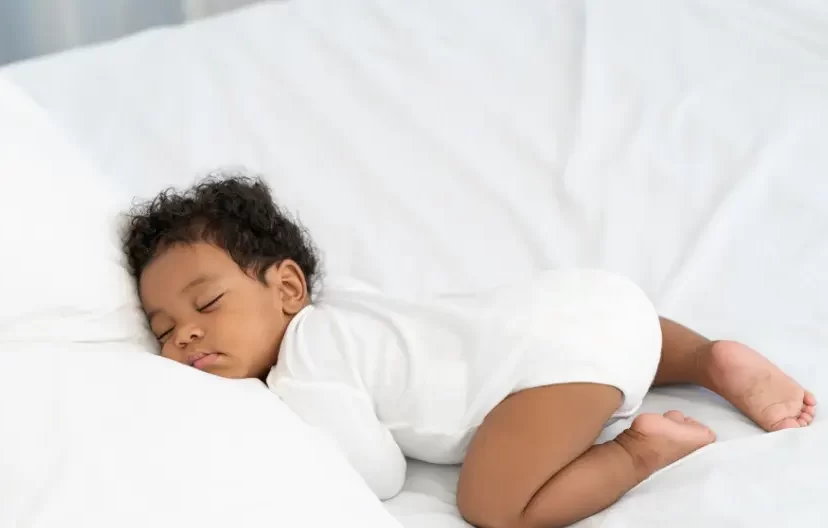Sleep Training for 2-Year-Olds: Growth, And Overall Well-Being
We may earn a small commission for purchases made using our links (not affecting your price).
See our disclosure to learn more.
Sleep is essential for toddlers’ growth, development, and overall well-being. If you have a toddler, bedtime can be one of the more difficult times of the day, especially if you attempt to get your child to sleep independently. Parents need clarification on the number of ways and ideas available for Sleep Training for 2-year-olds. Parents face challenges regarding their infants and need clarification about Sleep Training for 2-year-olds.
Easy bedtimes are close if you have these and a lot of patience. This article is a complete guide for sleep training for 2-year-olds. It offers an Understanding of Sleep Needs. Toddlers aged two need 11-14 hours of sleep daily, including nighttime and daytime naps. It would help if you created a consistent sleep routine that accommodates these needs and supports their physical and cognitive development. Good practical tips and strategies to make healthy sleep habits and promote restful nights for both toddlers and parents.
Can you use sleep training for 2-year-olds?
It is possible to sleep training a 2-year-old and establish good sleeping habits. Year sleep training teaches your child to self-soothe and fall asleep without parental help. Transitioning can be difficult because many toddlers have certain associations with sleep, like being fed or rocked to sleep.
How many nights are needed to successfully sleep-train a 2-year-old?
Sleep training can last from a few days to a couple of weeks. This training can take weeks or even months to produce noticeable results. The results will depend on several things, such as the technique, goals, and temperament. You can see progress in 3-4 nights if you choose a more direct method like crying it out.
The techniques allow you to reduce your involvement or let your child self-soothe. Your child may need a few days to adapt to the changes. It doesn’t matter which sleep-training method you select, but consistency is essential to the success of your program. Even if there are initial difficulties or resistance from your child, stick to the same routine each night.
Consistency is key to establishing new sleeping habits and allowing your child to adapt and understand your expectations. Every child is different, so what works for one may not be the best for another. You must be flexible and patient because it may take some time for your 2-year-old to adapt to new changes. Stay committed because it will eventually improve your two-year-old’s sleep habits.
Sleep training methods for 2-year-old
There are many approaches to consider when it comes time to train your 2-year-old child. These are some of the most common methods.
Gentle Methods:
The gentle sleep training method focuses on gradually transitioning your baby to independent sleep while providing comfort and assurance. There are techniques such as fading, whereby you gradually reduce the sleep association, or gradual retreat, whereby you decrease your presence while your child falls asleep.
Chair Method:
This infant Sleep training method involves sitting in a comfortable chair near your child’s crib or bed. The chair method is a gentle approach where you sit in a chair next to your child’s bed or crib. You begin by remaining there until the child falls asleep and gradually remove the seat each night. It would help if you taught your child that you will support them when they fall asleep.
Ferber Method (Gradual Extinction):
When your child cries, you can use the Ferber method to increase the time before comforting them. Begin with shorter intervals and then gradually increase them. This method aims to help your child learn to self-soothe and fall asleep.
Cry-It-Out or Total Extinction:
This method is also called total extinction. It involves not intervening immediately when your child cries. They must learn how to soothe themselves and go to sleep independently. It can challenge parents and children but teach some families to fall asleep independently.
Bedtime Pass Method:
Give your child an “overnight pass, ” allowing him to leave his room for one specific purpose (e.g., using the toilet) during the night. It helps your child self-regulate and understand the boundaries of leaving their bedroom.
Tips for sleep training for 2-year-olds
Bedtime Routine: Create a consistent bedtime routine that includes activities to calm your child, such as taking a bath in warm water, brushing their teeth, telling a story before bed, or cuddling. Repeat the same activities each night to signal your child to go to bed.
Consistency: Keep to a consistent sleep routine and schedule. Even on the weekends, stick to your bedtimes and wake-up times. Consistency is important to regulate your child’s inner clock. It also promotes better sleep training.
Gradual Transition: You can teach your child how to sleep independently by placing them in their bed or crib while awake but drowsy. It allows your child to learn to fall asleep independently and develop self-soothing abilities.
Positive Sleep Associations: Introduce an object or activity associated with sleeping, like a soft stuffed toy or soothing music. This familiarity and comfort can help your child feel relaxed and secure at bedtime.
Comfortable Sleep Environment: Keep the room dark, comfortable, and quiet to create a sleeping-friendly atmosphere. To improve the sleeping environment, use blackout curtains or white noise machines.
Respond with Reassurance:
- Offer gentle reassurance if your child cries or gets upset during the sleep training.
- Comfort them with soothing words, patting, or briefly staying with them until they calm down.
- Reduce your presence gradually to allow them to develop self-soothing abilities.
Avoid Stimulation: If you are waking up in the night, try to avoid interactions that can be stimulating. Avoid excessive interaction and maintain a calm, silent environment. By speaking soothingly and placing moving objects within reach of your child’s hand, you can encourage them to sleep.
Naptime Routine: Make a schedule for nap time that matches the bedtime routine. Create a calm and soothing atmosphere for daytime naps to encourage your child to associate this time with sleep.
Patience and Persistence: Training your body to sleep takes time and patience. Keep going, even when you encounter resistance and setbacks. Persistence is the key to forming healthy sleep habits in most children.
Seek Professional Advice if Needed: Consult a pediatrician when facing serious problems or if your child is experiencing persistent sleep issues. Get personalized advice and support tailored to the needs of your child.
Conclusion:
Sleep training is beneficial for children under two years old. Sleep training can help your child get a better night’s sleep and have a positive attitude. By establishing a consistent bedtime and creating a sleep-friendly environment, you can help your child develop healthy sleep habits. Choose a method of sleep training that works for your child. You can purchase our toddler sleep-training technique.




